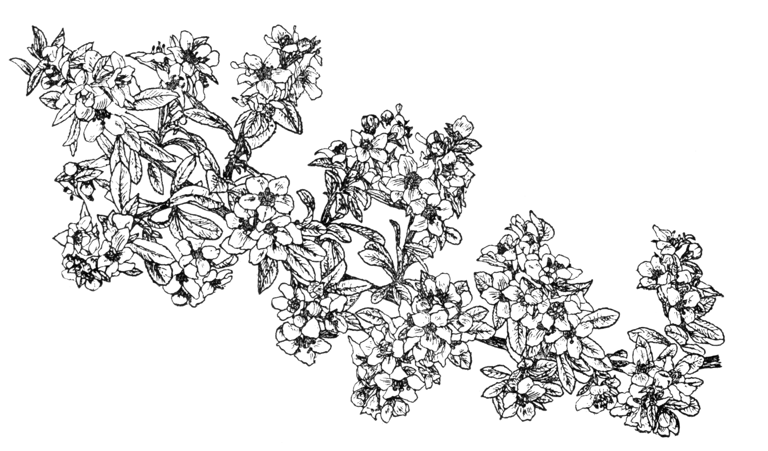A deciduous shrub of robust habit and graceful form 6 to 8 ft high, the branches very leafy, often arching. Leaves obovate, 1⁄2 to 3⁄4 in. long, 1⁄6 to 1⁄4 in. wide, tapering at the base, toothed; quite glabrous on both surfaces. Flowers pure white, 1⁄3 to 1⁄2 in. across, produced during June and July in the uppermost leaf-axils and at the end of short twigs, the whole forming a leafy raceme 3⁄4 to 11⁄2 in. long; calyx top-shaped, with five triangular lobes.
Native of Chile from 370 S. to the end of the continent, and of neighbouring parts of Argentina; introduced by Pearce for Messrs Veitch, between 1860 and 1866, and first flowered in their nursery in 1873. This is undoubtedly the hardiest of all known escallonias; it has survived without any injury 32° of frost at Kew, quite unprotected. It is also very distinct; besides being deciduous, its petals do not, as in so many species, form a kind of tube. Both in leaf and flower it bears a considerable resemblance to the New Zealand shrub Leptospermum scoparium – an ally, however, of the myrtle. It is undoubtedly one of the most pleasing of later-flowering shrubs. It is rather variable in habit in the wild state. Near the tree-line it forms a spreading procumbent shrub, while in the Magellan region it is sometimes seen as a small fastigiate bush.


